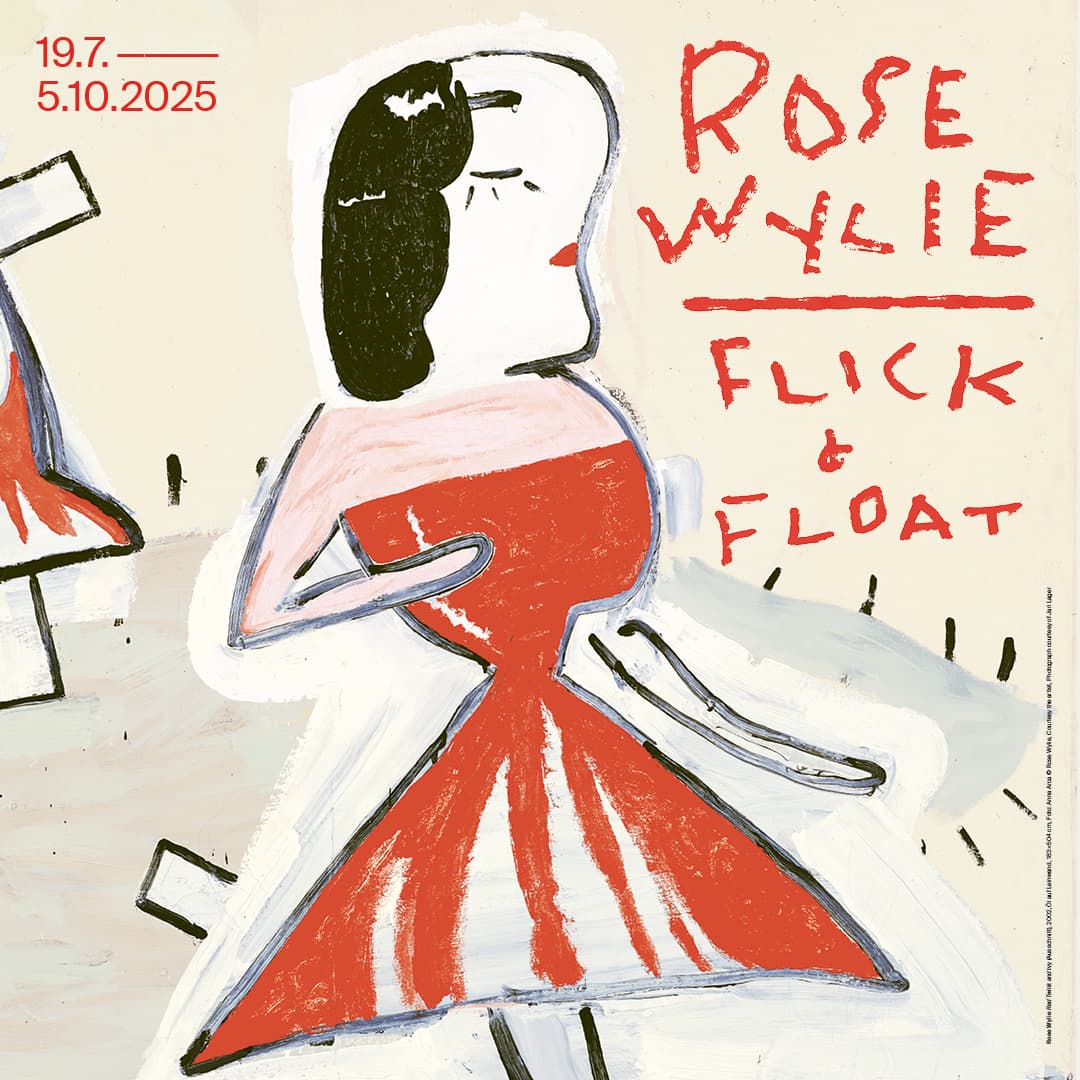
Introduction
The solo exhibition Rose Wylie. Flick and Float at the Zentrum Paul Klee presents the fascinating work of an artist who expands the conventional boundaries of painting to occupy a distinct place in art history. Rose Wylie was born in Hythe, a town in Kent, England, in 1934. She studied at the Folkestone and Dover School of Art, Goldsmiths College, and the Royal College of Art in London. For a time, Wylie devoted her full attention to the family she has with fellow artist Roy Oxlade.
Wylie paints captivating visual impressions from everyday life. She might respond to a scene in a film, a figure in a painting with noticeably thin legs, distinctive clothing, an unusual posture – anything that defies the norm or stands out. Wylie uses media images from movies, newspapers, and the internet. Her work also encompasses seemingly trivial, irrelevant subject matter. She draws upon art historical precedents, including prehistoric art, early Renaissance art, and painters such as El Greco and Philip Guston. Overall, she blurs the line between high art and popular culture. In the title of this exhibition, she uses “flick” to refer to rapidly clicking through this imagery, which she transforms on the canvas through the fluid process suggested by the word “float.”
To move from her initial visual impression to a finished painting, Wylie undertakes a lengthy working process. The artist makes sketches of a subject from memory until she finds the composition that reflects her unique impression. This creative process continues as she transfers the sketch to canvas. She does not conceal adjustments but instead adds pieces of paper or strips of canvas to “correct” the image when necessary. In this way, her work takes on a collage-like effect. Painting on loose, unstretched canvas in her studio facilitates this process. The height of Wylie’s studio also determines the dimensions of the canvas.
Rose Wylie is deeply engaged with art history and theory, as is evident from the technical accomplishment of her oil paintings. Yet her goal is not to reproduce reality or to create a convincing illusion of space through linear perspective. To her, this would be mere copying. Rather, she strives for a simplified mode of representation, achieving it through a mastery of artistic means and sophisticated, well-developed compositions. Wylie also uses text, which in some cases reinforces the subject matter. However, she is more interested in the form of the letters and their influence on the composition than in linguistic content. Her non-narrative paintings present groups of unrelated pictorial elements. The resulting contrast supports her formal investigations and creates an associative game that allows viewers to invent their own stories.
Studio Visit with Rose Wylie
Imprint
Rose Wylie. Flick and Float
Zentrum Paul Klee, Bern
19.7. – 5.10.2025
Digital Guide
Implementation: Netnode AG
Project Management: Dominik Imhof
Curator and Texts: Fabienne Eggelhöfer (Chief curator ZPK), Josephine Rechberg (Scientific volunteer)
Translation: Sarah McGavran
The Zentrum Paul Klee is fully accessible and offers inclusive events.
With support from
 |
 |
 |
 |














